Dell OptiPlex GX280 User Manual
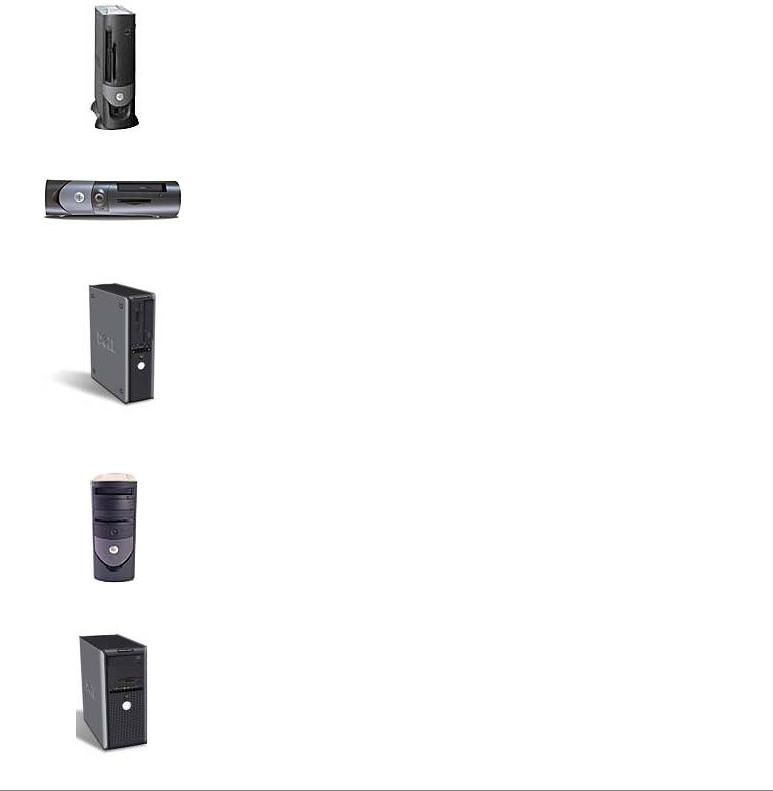
Dell™ OptiPlex™ GX280 Systems User's Guide
Small Form-Factor Computer
Small Desktop Computer
Desktop Computer
Small Mini-Tower Computer
Mini-Tower Computer

Dell™ OptiPlex™ GX280 Systems User's Guide
Small Form-Factor
Computer
Documentation for Your Computer
Finding Information Specifications
Cleaning Your Computer
Advanced Features
LegacySelect Technology Control Manageability
Security
Password Protection System Setup
Booting to a USB Device Clearing Forgotten Passwords Clearing CMOS Settings Hyper-Threading
Power Management
About Your Computer |
Adding and Removing Parts |
Front View |
Before You Begin |
Back View |
Opening the Computer Cover |
Inside Your Computer |
Battery |
System Board Components |
Chassis Intrusion Switch |
Attaching and Removing the Computer Stand |
Drives |
|
I/O Panel |
|
Memory |
|
PCI and PCI Express Cards and Serial Port Adapters |
|
Power Supply |
|
Processor |
|
System Board |
|
Closing the Computer Cover |
Computer and Software Problems Additional Information |
|
Troubleshooting Tools and Utilities |
Microsoft® Windows® XP Features |
Solving Problems |
Glossary |
Reinstalling Drivers and the Operating System |
Warranty |
Getting Help |
FCC Notices (U.S. Only) |
|
|
Notes, Notices, and Cautions
NOTE: A NOTE indicates important information that helps you make better use of your computer.
NOTICE: A NOTICE indicates either potential damage to hardware or loss of data and tells you how to avoid the problem.
CAUTION: A CAUTION indicates a potential for property damage, personal injury, or death.

Abbreviations and Acronyms
For a complete list of abbreviations and acronyms, see the "Glossary."
If you purchased a Dell™ n Series computer, any references in this document to Microsoft® Windows® operating systems are not applicable.
The Drivers and Utilities CD (ResourceCD), operating system media, and Quick Reference Guides are optional, and as such may not ship with all computers.
Information in this document is subject to change without notice. © 2005 Dell Inc. All rights reserved.
Reproduction in any manner whatsoever without the written permission of Dell Inc. is strictly forbidden.
Trademarks used in this text: Dell, the DELL logo, OptiPlex, Inspiron, Dimension, Latitude, Dell Precision, DellNet, TravelLite, Dell OpenManage, PowerVault, Axim, PowerEdge, PowerConnect, and PowerApp are trademarks of Dell Inc.; Intel, Pentium, and Celeron are registered trademarks of Intel Corporation; Microsoft, Windows NT, MS-DOS, and Windows are registered trademarks of Microsoft Corporation; IBM and OS/2 are registered trademarks of International Business Machines Corporation; NetWare and Novell are registered trademarks of Novell, Inc. Bluetooth is a trademark owned by Bluetooth SIG, Inc. and is used by Dell Inc. under license. ENERGY STAR is a registered trademark of the U.S. Environmental Protection Agency. As an ENERGY STAR partner, Dell Inc. has determined that this product meets the ENERGY STAR guidelines for energy efficiency.
Other trademarks and trade names may be used in this document to refer to either the entities claiming the marks and names or their products. Dell Inc. disclaims any proprietary interest in trademarks and trade names other than its own.
Models: DHP, DHS, DCNE, DHM, and DCSM
September 2005 Y2952 Rev. A05

Dell™ OptiPlex™ GX280 Systems User's Guide
Small Desktop Computer
Documentation for Your Computer
Finding Information Specifications
Cleaning Your Computer
Advanced Features
LegacySelect Technology Control Manageability
Security
Password Protection System Setup
Booting to a USB Device Clearing Forgotten Passwords Clearing CMOS Settings Hyper-Threading
Power Management
About Your Computer |
Adding and Removing Parts |
Front View |
Before You Begin |
Back View |
Opening the Computer Cover |
Inside Your Computer |
Battery |
System Board Components |
Chassis Intrusion Switch |
Attaching and Removing the Computer Stand |
Drives |
|
I/O Panel |
|
Memory |
|
PCI and PCI Express Cards and Serial Port Adapters |
|
Power Supply |
|
Processor |
|
System Board |
|
Closing the Computer Cover |
Computer and Software Problems Additional Information |
|
Troubleshooting Tools and Utilities |
Microsoft® Windows® XP Features |
Solving Problems |
Glossary |
Reinstalling Drivers and the Operating System |
Warranty |
Getting Help |
FCC Notices (U.S. Only) |
|
|
Notes, Notices, and Cautions
NOTE: A NOTE indicates important information that helps you make better use of your computer.
NOTICE: A NOTICE indicates either potential damage to hardware or loss of data and tells you how to avoid the problem.
CAUTION: A CAUTION indicates a potential for property damage, personal injury, or death.
Abbreviations and Acronyms

For a complete list of abbreviations and acronyms, see the "Glossary."
If you purchased a Dell™ n Series computer, any references in this document to Microsoft® Windows® operating systems are not applicable.
The Drivers and Utilities CD (ResourceCD), operating system media, and Quick Reference Guides are optional, and as such may not ship with all computers.
Information in this document is subject to change without notice. © 2005 Dell Inc. All rights reserved.
Reproduction in any manner whatsoever without the written permission of Dell Inc. is strictly forbidden.
Trademarks used in this text: Dell, the DELL logo, OptiPlex, Inspiron, Dimension, Latitude, Dell Precision, DellNet, TravelLite, Dell OpenManage, PowerVault, Axim, PowerEdge, PowerConnect, and PowerApp are trademarks of Dell Inc.; Intel, Pentium, and Celeron are registered trademarks of Intel Corporation; Microsoft, Windows NT, MS-DOS, and Windows are registered trademarks of Microsoft Corporation; IBM and OS/2 are registered trademarks of International Business Machines Corporation; NetWare and Novell are registered trademarks of Novell, Inc. Bluetooth is a trademark owned by Bluetooth SIG, Inc. and is used by Dell Inc. under license. ENERGY STAR is a registered trademark of the U.S. Environmental Protection Agency. As an ENERGY STAR partner, Dell Inc. has determined that this product meets the ENERGY STAR guidelines for energy efficiency.
Other trademarks and trade names may be used in this document to refer to either the entities claiming the marks and names or their products. Dell Inc. disclaims any proprietary interest in trademarks and trade names other than its own.
Models: DHP, DHS, DCNE, DHM, and DCSM
September 2005 Y2952 Rev. A05
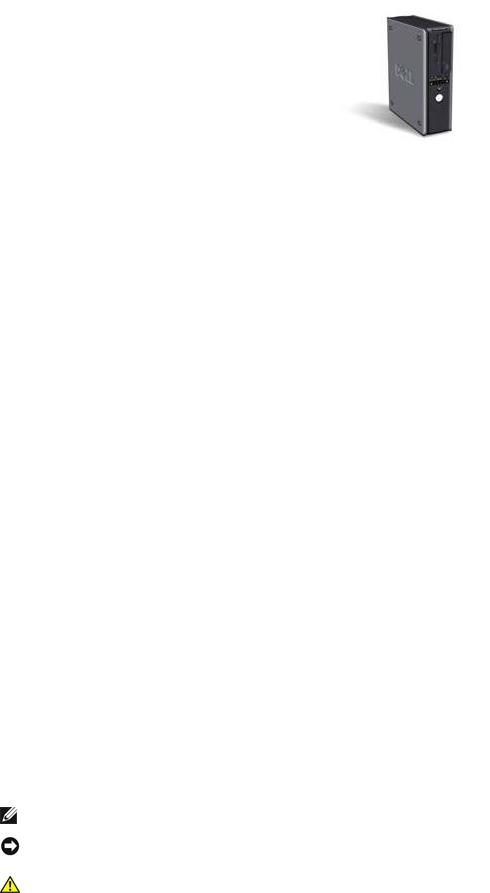
Dell™ OptiPlex™ GX280 Systems User's Guide
Desktop Computer
Documentation for Your Computer
Finding Information Specifications
Cleaning Your Computer
Advanced Features
LegacySelect Technology Control Manageability
Security
Password Protection System Setup
Booting to a USB Device Clearing Forgotten Passwords Clearing CMOS Settings Hyper-Threading
Power Management
About Your Computer |
Adding and Removing Parts |
Front View |
Before You Begin |
Back View |
Opening the Computer Cover |
Inside Your Computer |
Battery |
System Board Components |
Chassis Intrusion Switch |
|
Drives |
|
I/O Panel |
|
Memory |
|
PCI and PCI Express Cards and Serial Port Adapters |
|
Power Supply |
|
Processor |
|
System Board |
|
Closing the Computer Cover |
Computer and Software Problems Additional Information |
|
Troubleshooting Tools and Utilities |
Microsoft® Windows® XP Features |
Solving Problems |
Glossary |
Reinstalling Drivers and the Operating System |
Warranty |
Getting Help |
FCC Notices (U.S. Only) |
|
|
Notes, Notices, and Cautions
NOTE: A NOTE indicates important information that helps you make better use of your computer.
NOTICE: A NOTICE indicates either potential damage to hardware or loss of data and tells you how to avoid the problem.
CAUTION: A CAUTION indicates a potential for property damage, personal injury, or death.

Abbreviations and Acronyms
For a complete list of abbreviations and acronyms, see the "Glossary."
If you purchased a Dell™ n Series computer, any references in this document to Microsoft® Windows® operating systems are not applicable.
The Drivers and Utilities CD (ResourceCD), operating system media, and Quick Reference Guides are optional, and as such may not ship with all computers.
Information in this document is subject to change without notice. © 2004 Dell Inc. All rights reserved.
Reproduction in any manner whatsoever without the written permission of Dell Inc. is strictly forbidden.
Trademarks used in this text: Dell, the DELL logo, OptiPlex, Inspiron, Dimension, Latitude, Dell Precision, DellNet, TravelLite, Dell OpenManage, PowerVault, Axim, PowerEdge, PowerConnect, and PowerApp are trademarks of Dell Inc.; Intel, Pentium, and Celeron are registered trademarks of Intel Corporation; Microsoft, Windows NT, MS-DOS, and Windows are registered trademarks of Microsoft Corporation; IBM and OS/2 are registered trademarks of International Business Machines Corporation; NetWare and Novell are registered trademarks of Novell, Inc. Bluetooth is a trademark owned by Bluetooth SIG, Inc. and is used by Dell Inc. under license. ENERGY STAR is a registered trademark of the U.S. Environmental Protection Agency. As an ENERGY STAR partner, Dell Inc. has determined that this product meets the ENERGY STAR guidelines for energy efficiency.
Other trademarks and trade names may be used in this document to refer to either the entities claiming the marks and names or their products. Dell Inc. disclaims any proprietary interest in trademarks and trade names other than its own.
Models: DHP, DHS, DCNE, DHM, and DCSM
September 2005 Y2952 Rev. A05

Dell™ OptiPlex™ GX280 Systems User's Guide
Small Mini-Tower
Computer
Documentation for Your Computer
Finding Information Specifications
Cleaning Your Computer
Advanced Features
LegacySelect Technology Control Manageability
Security
Password Protection System Setup
Booting to a USB Device Clearing Forgotten Passwords Clearing CMOS Settings Hyper-Threading
Power Management
About Your Computer |
Adding and Removing Parts |
Front View |
Before You Begin |
Back View |
Opening the Computer Cover |
Inside Your Computer |
Battery |
System Board Components |
Chassis Intrusion Switch |
Front-Panel Door and Hinge Arms |
Drives |
|
I/O Panel |
|
Memory |
|
PCI and PCI Express Cards and Serial Port Adapters |
|
Power Supply |
|
Processor |
|
System Board |
|
Closing the Computer Cover |
Computer and Software Problems Additional Information |
|
Troubleshooting Tools and Utilities |
Microsoft® Windows® XP Features |
Solving Problems |
Glossary |
Reinstalling Drivers and the Operating System |
Warranty |
Getting Help |
FCC Notices (U.S. Only) |
|
|
Notes, Notices, and Cautions
NOTE: A NOTE indicates important information that helps you make better use of your computer.
NOTICE: A NOTICE indicates either potential damage to hardware or loss of data and tells you how to avoid the problem.
CAUTION: A CAUTION indicates a potential for property damage, personal injury, or death.

Abbreviations and Acronyms
For a complete list of abbreviations and acronyms, see the "Glossary."
If you purchased a Dell™ n Series computer, any references in this document to Microsoft® Windows® operating systems are not applicable.
The Drivers and Utilities CD (ResourceCD), operating system media, and Quick Reference Guides are optional, and as such may not ship with all computers.
Information in this document is subject to change without notice. © 2005 Dell Inc. All rights reserved.
Reproduction in any manner whatsoever without the written permission of Dell Inc. is strictly forbidden.
Trademarks used in this text: Dell, the DELL logo, OptiPlex, Inspiron, Dimension, Latitude, Dell Precision, DellNet, TravelLite, Dell OpenManage, PowerVault, Axim, PowerEdge, PowerConnect, and PowerApp are trademarks of Dell Inc.; Intel, Pentium, and Celeron are registered trademarks of Intel Corporation; Microsoft, Windows NT, MS-DOS, and Windows are registered trademarks of Microsoft Corporation; IBM and OS/2 are registered trademarks of International Business Machines Corporation; NetWare and Novell are registered trademarks of Novell, Inc. Bluetooth is a trademark owned by Bluetooth SIG, Inc. and is used by Dell Inc. under license. ENERGY STAR is a registered trademark of the U.S. Environmental Protection Agency. As an ENERGY STAR partner, Dell Inc. has determined that this product meets the ENERGY STAR guidelines for energy efficiency.
Other trademarks and trade names may be used in this document to refer to either the entities claiming the marks and names or their products. Dell Inc. disclaims any proprietary interest in trademarks and trade names other than its own.
Models: DHP, DHS, DCNE, DHM, and DCSM
September 2005 Y2952 Rev. A05
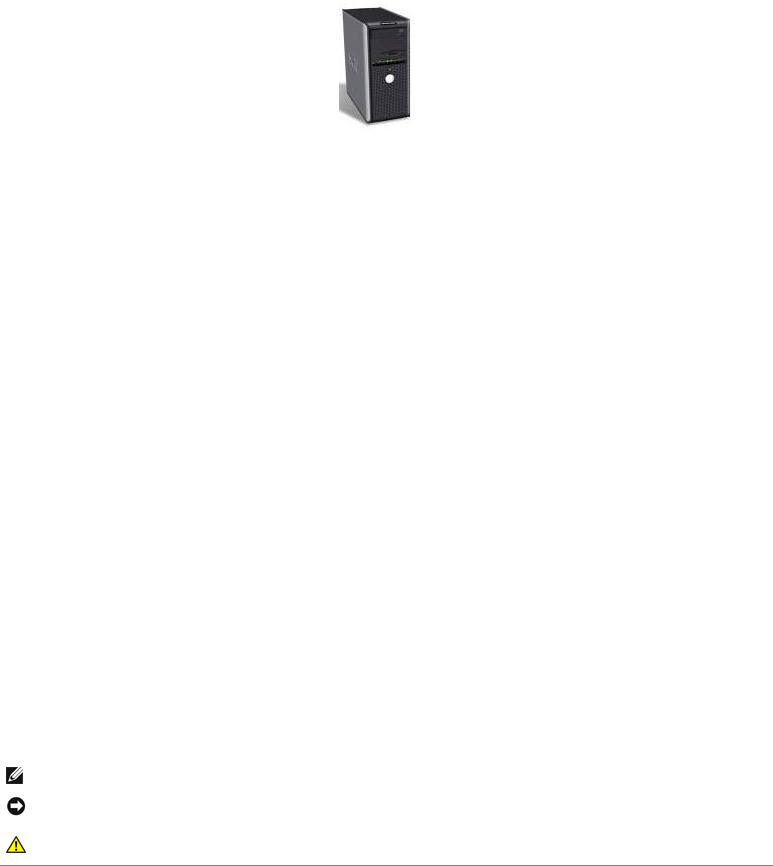
Dell™ OptiPlex™ GX280 Systems User's Guide
Mini-Tower Computer
Documentation for Your Computer
Finding Information Specifications
Cleaning Your Computer
Advanced Features
LegacySelect Technology Control Manageability
Security
Password Protection System Setup
Booting to a USB Device Clearing Forgotten Passwords Clearing CMOS Settings Hyper-Threading
Power Management
About Your Computer |
Adding and Removing Parts |
Front View |
Before You Begin |
Back View |
Opening the Computer Cover |
Inside Your Computer |
Battery |
System Board Components |
Chassis Intrusion Switch |
|
Drives |
|
I/O Panel |
|
Memory |
|
PCI and PCI Express Cards and Serial Port Adapters |
|
Power Supply |
|
Processor |
|
System Board |
|
Closing the Computer Cover |
Computer and Software Problems Additional Information |
|
Troubleshooting Tools and Utilities |
Microsoft® Windows® XP Features |
Solving Problems |
Glossary |
Reinstalling Drivers and the Operating System |
Warranty |
Getting Help |
FCC Notices (U.S. Only) |
|
|
Notes, Notices, and Cautions
NOTE: A NOTE indicates important information that helps you make better use of your computer.
NOTICE: A NOTICE indicates either potential damage to hardware or loss of data and tells you how to avoid the problem.
CAUTION: A CAUTION indicates a potential for property damage, personal injury, or death.

Abbreviations and Acronyms
For a complete list of abbreviations and acronyms, see the "Glossary."
If you purchased a Dell™ n Series computer, any references in this document to Microsoft® Windows® operating systems are not applicable.
The Drivers and Utilities CD (ResourceCD), operating system media, and Quick Reference Guides are optional, and as such may not ship with all computers.
Information in this document is subject to change without notice. © 2005 Dell Inc. All rights reserved.
Reproduction in any manner whatsoever without the written permission of Dell Inc. is strictly forbidden.
Trademarks used in this text: Dell, the DELL logo, OptiPlex, Inspiron, Dimension, Latitude, Dell Precision, DellNet, TravelLite, Dell OpenManage, PowerVault, Axim, PowerEdge, PowerConnect, and PowerApp are trademarks of Dell Inc.; Intel, Pentium, and Celeron are registered trademarks of Intel Corporation; Microsoft, Windows NT, MS-DOS, and Windows are registered trademarks of Microsoft Corporation; IBM and OS/2 are registered trademarks of International Business Machines Corporation; NetWare and Novell are registered trademarks of Novell, Inc. Bluetooth is a trademark owned by Bluetooth SIG, Inc. and is used by Dell Inc. under license. ENERGY STAR is a registered trademark of the U.S. Environmental Protection Agency. As an ENERGY STAR partner, Dell Inc. has determined that this product meets the ENERGY STAR guidelines for energy efficiency.
Other trademarks and trade names may be used in this document to refer to either the entities claiming the marks and names or their products. Dell Inc. disclaims any proprietary interest in trademarks and trade names other than its own.
Models: DHP, DHS, DCNE, DHM, and DCSM
September 2005 Y2952 Rev. A05
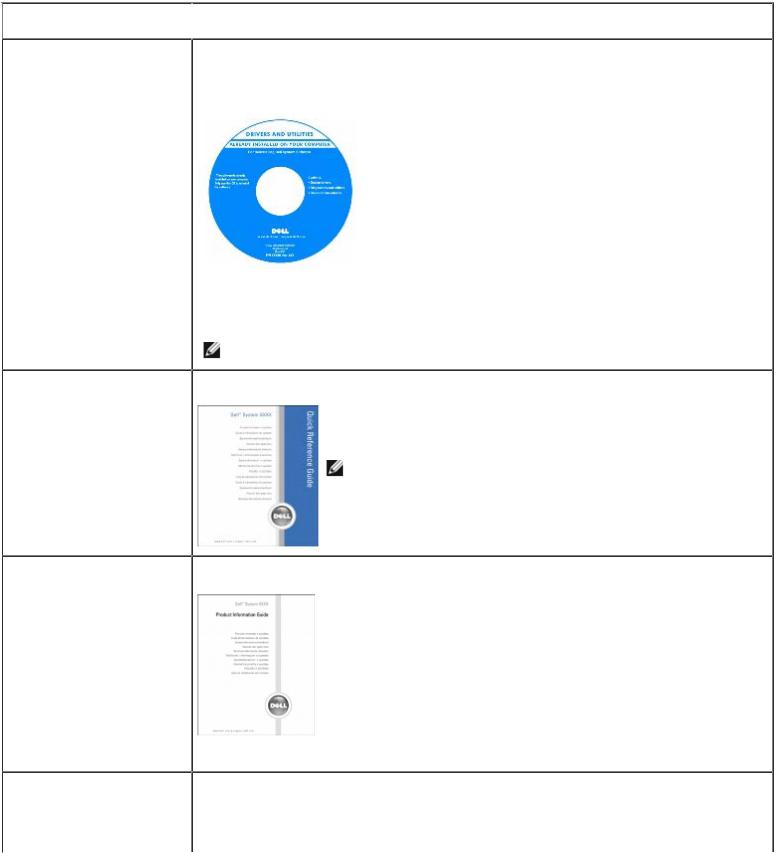
Back to Contents Page
Finding Information
Dell™ OptiPlex™ GX280 Systems User's Guide
 What Are You Looking For?
What Are You Looking For?
 A diagnostic program for my computer
A diagnostic program for my computer
 Drivers for my computer
Drivers for my computer
 My computer documentation
My computer documentation  My device documentation
My device documentation
 How to set up my computer
How to set up my computer
 Troubleshooting information
Troubleshooting information
 How to run the Dell Diagnostics
How to run the Dell Diagnostics
 Error codes and diagnostic lights
Error codes and diagnostic lights  Tools and utilities
Tools and utilities
 Warranty information
Warranty information
 Safety instructions
Safety instructions
 Regulatory information
Regulatory information
 Ergonomics information
Ergonomics information
 End User License Agreement
End User License Agreement
 How to remove and replace parts
How to remove and replace parts
 Technical specifications
Technical specifications  How to configure
How to configure
 Find it Here
Find it Here
Drivers and Utilities CD (also known as the ResourceCD)
Documentation and drivers are already installed on your computer. You can use the CD to reinstall drivers, run the Dell Diagnostics, or access your documentation.
Readme files may be included on your CD to provide last-minute updates about technical changes to your computer or advanced technical-reference material for technicians or experienced users.
NOTE: The Drivers and Utilities CD is optional and may not ship with all computers.
Quick Reference Guide
NOTE: This document is available as a PDF at support.dell.com.
NOTE: The Quick Reference Guide is optional and may not ship with all computers.
Dell™ Product Information Guide
User's Guide
Microsoft® Windows® XP Help and Support Center
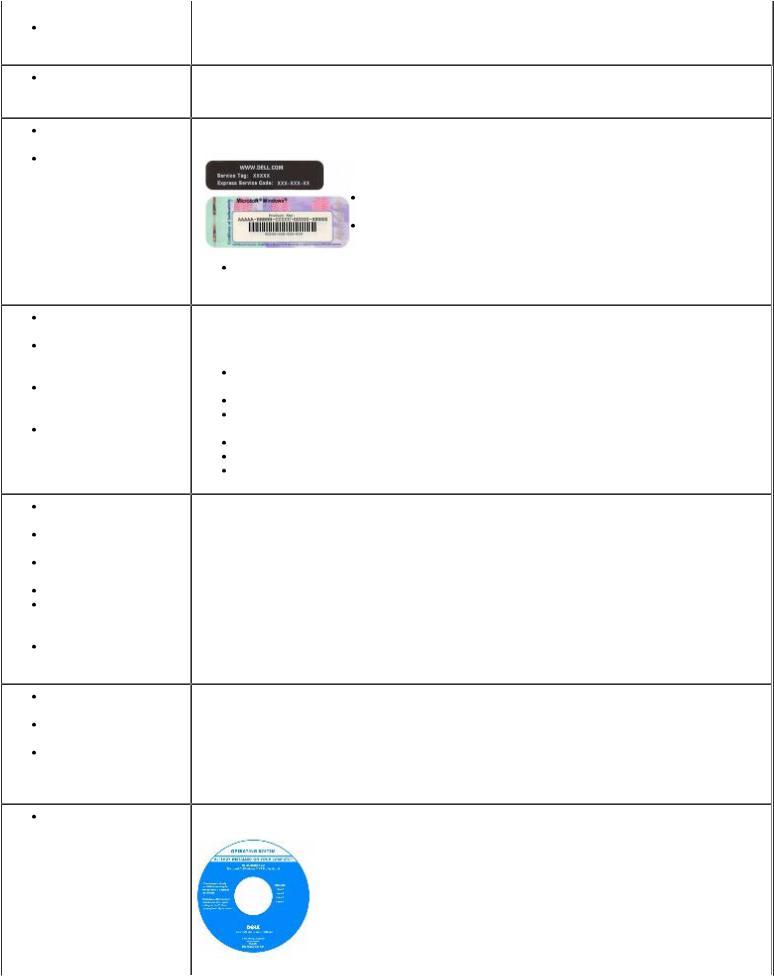
system settings How to troubleshoot and solve problems
Operating system updates and patches
Service Tag and
Express Service Code
Microsoft Windows
License Label
1.Click the Start button and click Help and Support.
2.Click User's and system guides and click User's guides.
Desktop System Software (DSS)
The DSS is located on the Drivers and Utilities CD and on the Dell Support website.
Service Tag and Microsoft Windows License
These labels are located on your computer.
Use the Service Tag to identify your computer when you use support.dell.com or contact technical support.
Enter the Express Service Code to direct your call when contacting technical support. The Express Service Code is not available in all countries.
Use the number on the Microsoft Windows License Label if you reinstall your operating system.
Latest drivers for my computer
Answers to technical service and support questions
Online discussions with other users and technical support Documentation for my computer
Dell Support Website — support.dell.com
The Dell Support website provides several online tools, including:
Solutions — Troubleshooting hints and tips, articles from technicians, and online courses
Community — Online discussion with other Dell customers
Upgrades — Upgrade information for components, such as memory, the hard drive, and the operating system
Customer Care — Contact information, order status, warranty, and repair information Downloads — Drivers, patches, and software updates
Reference — Computer documentation, product specifications, and white papers
Service call status and support history
Top technical issues for my computer Frequently asked questions
File downloads Details on my computer configuration Service contract for my computer
Dell Premier Support Website — premiersupport.dell.com
The Dell Premier Support website is customized for corporate, government, and education customers. This website may not be available in all regions.
How to use Windows XP
Documentation for my computer Documentation for devices (such as a modem)
How to reinstall my operating system
Windows Help and Support Center
1.Click the Start button and click Help and Support.
2.Type a word or phrase that describes your problem and click the arrow icon.
3.Click the topic that describes your problem.
4.Follow the instructions on the screen.
Operating System CD
The operating system is already installed on your computer. To reinstall your operating system, use the Operating System CD. See "Reinstalling Microsoft Windows XP" for reinstallation instructions.
After you reinstall your operating system, use the Drivers and Utilities CD to reinstall drivers for the devices that came with your computer.
Your operating system license label is located on your computer.

NOTE: The operating system media is optional and may not ship with all computers
Back to Contents Page

Back to Contents Page
Specifications
Dell™ OptiPlex™ GX280 Systems User's Guide
Microprocessor |
|
Microprocessor type |
Intel® Pentium® 4; design provides for |
|
future Dell-supported upgrades. |
Level 1 (L1) cache |
32 KB |
Level 2 (L2) cache |
1 MB pipelined-burst, eight-way set |
|
associative, write-back SRAM |
Memory |
|
Type |
400 & 533 MHz DDR2 SDRAM |
Memory connectors |
small form-factor computer: 2 |
|
small desktop computer: 4 |
|
desktop computer: 4 |
|
small mini-tower computer: 4 |
|
mini-tower computer: 4 |
Memory capacities |
128 MB, 256 MB, 512 MB, or 1 GB non- |
|
ECC |
Minimum memory |
dual-channel: 256 MB |
|
single-channel: 128 MB |
Maximum memory |
small form-factor computer: 2 GB |
|
small desktop computer: 4 GB |
|
desktop computer: 4 GB |
|
small mini-tower computer: 4 GB |
|
mini-tower computer: 4 GB |
BIOS address |
F0000h |
Computer Information |
|
Chipset |
Intel Grantsdale |
Data bus width |
64 bits |
Address bus width |
32 bits |
DMA channels |
eight |
Interrupt levels |
24 |
BIOS chip (NVRAM) |
4-Mb |
Memory speed |
400 & 533 MHz |
NIC |
integrated network interface with ASF |
|
1.03 support as defined by DMTF. |
|
Capable of 10/100/1000 communication: |
|
Green — A good connection exists |
|
between a 10-Mbps network and |
|
the computer. |
|
Orange — A good connection exists |
|
between a 100-Mbps network and |
|
the computer. |
|
Yellow — A good connection exists |

|
between a 1 Gb (or 1000-Mbps) |
|
network and the computer. |
|
Off — The computer is not |
|
detecting a physical connection to |
|
the network. |
Video |
|
|
|
Type |
integrated Intel Extreme Graphics or PCI |
|
Express x16 DVI video card |
Audio |
|
Type |
AC97, Sound Blaster emulation |
Stereo conversion |
16-bit analog-to-digital; 20-bit digital-to- |
|
analog |
Controllers |
|
Drives |
small form-factor: one serial ATA |
|
controller supporting one device and one |
|
parallel Ultra ATA/100 IDE supporting two |
|
devices per channel with one channel |
|
small desktop: one serial ATA controllers |
|
supporting one device each and one |
|
parallel Ultra ATA/100 IDE supporting two |
|
devices per channel with one channel |
|
desktop: two serial ATA controllers |
|
supporting one device each and one |
|
parallel Ultra ATA/100 IDE supporting two |
|
devices per channel with one channel. |
|
small mini-tower: two serial ATA |
|
controllers supporting one device each |
|
and one parallel Ultra ATA/100 IDE |
|
supporting two devices per channel with |
|
one channel |
|
mini-Tower: two serial ATA controllers |
|
supporting one device each and one |
|
parallel Ultra ATA/100 IDE supporting two |
|
devices per channel with one channel |
Expansion Bus |
|
Bus type |
PCI 2.2 |
|
SATA 1.0a |
|
USB 2.0 |
|
PCI Express 1.0a |
Bus speed |
PCI: 33 MHz |
|
SATA: 1.5 Gbps |
|
USB: 480 Mbps |
|
PCI Express x1: 5 Gbps |
|
PCI Express x16: 80 Gbps |
Small Form-Factor computer |
low-profile cards supported |
PCI |
|
connector |
one |
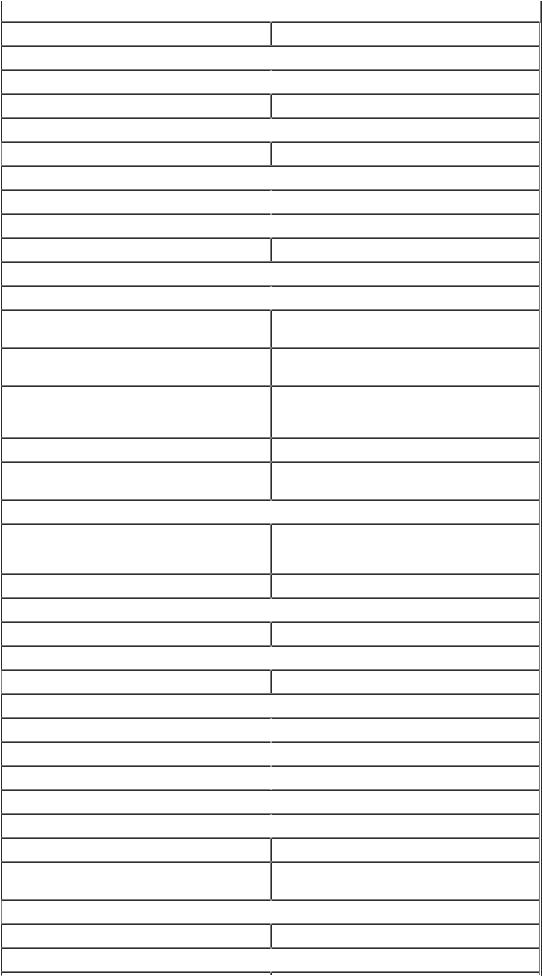
connector size
connector data width (maximum)
PCI Express
connector
connector size
connector data width (maximum)
 Small Desktop computer
Small Desktop computer
PCI
connectors
connector size
connector data width (maximum)
PCI Express
connector connector size
connector data width (maximum)
Desktop computer
PCI connectors
connector size connector data width (maximum)
PCI Express
connectors
connector size
connector data width
 Small Mini-Tower
Small Mini-Tower
PCI
connectors
connector size
connector data width (maximum)
PCI Express
connector
connector size
connector data width (maximum)
 Mini-Tower
Mini-Tower
PCI connectors
 120 pins
120 pins
32 bits
 one x16
one x16
164 pins
 16 PCI Express lanes half-length cards supported
16 PCI Express lanes half-length cards supported
 one or two (depending on purchase)
one or two (depending on purchase)  120 pins
120 pins
32 bits
 one x16 and an optional x1
one x16 and an optional x1
120 pins (x16) and an optional 36 pins
(x1)
16 PCI Express lanes (x16) and an optional one PCI Express lane (x1)
half-height cards supported half-length, full-height cards supported with optional with card cage
two (without card cage) two (with card cage)
 120 pins 32 bits
120 pins 32 bits
 one x16
one x16
120 pins (x16)
 16 PCI Express lanes (x16) full-height cards supported
16 PCI Express lanes (x16) full-height cards supported
 three
three  120 pins
120 pins  32 bits
32 bits
 one x1 and one x16
one x1 and one x16
36 pins (x1) and 120 pins (x16)
one PCI Express lane (x1) and 16 PCI Express lanes (x16)
 full-height cards supported
full-height cards supported
 two
two

connector size |
120 pins |
connector data width |
32 bits |
(maximum) |
|
PCI Express |
|
connectors |
one x1 and one x16 |
connector size |
36 pins (x1) and 120 pins (x16) |
connector date width |
one PCI Express lane (x1) and 16 PCI |
(maximum) |
Express lanes (x16) |
|
|
Drives |
|
Externally accessible: |
|
Small Form-Factor computer |
one bay for a slimline floppy drive |
|
one bay for a slimline CD/DVD drive |
Small Desktop computer |
one 3.5-inch bay |
|
one 5.25-inch bay |
Desktop computer |
one 3.5-inch drive |
|
one bay for CD/DVD or optional second |
|
Hard Drive |
Small Mini-Tower computer |
two 3.5-inch drive bays |
|
two 5.25-inch drive bays |
Mini-Tower computer |
one 3.5-inch drive bay |
|
two 5.25-inch drive bays |
Internally accessible: |
|
Small Form-Factor computer |
one bay for a 1-inch-high hard drive |
Small Desktop computer |
one bay for a 1-inch-high hard drive |
Desktop computer |
one bay for a 1-inch-high hard drive |
Small Mini-Tower computer |
two bays for 1-inch high hard drives |
Mini-Tower computer |
two bays for 1-inch high hard drives |
Connectors |
|
External connectors: |
|
Serial |
9-pin connector; 16550C-compatible |
Parallel |
25-hole connector (bidirectional) |
Video |
15-hole connector |
Network adapter |
RJ45 connector |
Optional PS/2 with secondary serial |
small form-factor computer: one 6-pin |
port adapter |
mini-DIN with a Y-adapter |
|
small desktop, small mini-tower, desktop, |
|
and mini-tower: two 6-pin mini-DINs |
USB |
two front-panel and six back-panel USB |
|
2.0–compliant connectors |
Audio |
three connectors for line-in, line-out, and |
|
microphone; one front-panel connector |
|
for headphones |
System board connectors: |
|

Primary IDE drive |
40-pin connector |
Serial ATA |
small form-factor computer: one 7-pin |
|
connector |
|
small desktop computer: one 7-pin |
|
connectors |
|
desktop computer: two 7-pin connectors |
|
small mini-tower: two 7-pin connectors |
|
mini-tower: two 7-pin connectors |
Floppy drive |
34-pin connector |
Serial |
12-pin connector for optional second |
|
serial port card |
Fan |
5-pin connector |
PCI 2.2 |
120-pin connector |
CD drive audio interface |
4-pin connector |
Front audio |
10-pin connector (For the optional audio |
|
customer kit) |
Front panel |
40-pin connector |
Key Combinations |
|
<Ctrl><Alt><Del> |
If running Microsoft® Windows® XP, |
|
brings up the Windows Security window. |
|
If in MS-DOS® mode, restarts (reboots) |
|
the computer |
<F2> or <Ctrl><Alt><Enter> |
starts embedded system setup (during |
|
start-up only) |
<Ctrl><Alt><b> |
automatically starts the computer from |
|
the network environment specified by the |
|
remote boot environment (PXE) rather |
|
than from one of the devices in the |
|
system setup Boot Sequence option |
|
(during start-up only) |
<F12> or <Ctrl><Alt><F8> |
displays a boot device menu that allows |
|
the user to enter a device for a single |
|
boot (during start-up only) as well as |
|
options to run hard-drive and system |
|
diagnostics |
Controls and Lights |
|
 Power control
Power control
Power light
 Hard-drive access light
Hard-drive access light
Link integrity light (on integrated network adapter)
 push button
push button
green light—blinking green in sleep state; solid green for power-on state
amber light—blinking amber indicates a problem with an installed device; solid amber indicates an internal power problem (see Power Problems)
 green
green
green light for 10-Mb operation; orange light for 100-Mb operation; yellow light for a 1000-Mb (1-Gb) operation
Activity light (on integrated network |
yellow blinking light |
adapter) |
|
Diagnostic lights |
small form-factor, small desktop, and |

 Standby power light
Standby power light
 Power
Power
DC power supply:
Wattage
Heat dissipation
Voltage
 Backup battery
Backup battery
 Physical
Physical
Small Form-Factor computer:
Height
Width
Depth
Weight
 Small Desktop computer:
Small Desktop computer:
Height
Width
Depth
Weight
 Desktop computer
Desktop computer
Height
Width
Depth Weight
 Small Mini-Tower computer:
Small Mini-Tower computer:
small mini-tower computers: four lights on the back panel
desktop and mini-towercomputers: four lights on the front panel
 AUX_PWR on the system board
AUX_PWR on the system board
small form-factor computer: 160 W small desktop computer: 210 W desktop computer: 280 W
small mini-tower computer with processor speeds of 3.2 GHz or lower: 250 W
small mini-tower computer with processor speeds of 3.4 GHz or higher: 305 W mini-tower computer: 305 W
small form-factor computer: 546 BTU/hr small desktop computer: 717 BTU/hr desktop computer: 150W max
small mini-tower computer with processor speeds of 3.2 GHz or lower: 853 BTU/hr small mini-tower computer with processor speeds of 3.4 GHz or higher: 1041 BTU/hr mini-tower computer: 150W max
fixed-voltage power supply—110 V at 50/60 Hz
manual selection and auto-sensing power supplies—90 to 135 V at 50/60 Hz; 180 to 265 V at 50/60 Hz; 100 V at 50/60 Hz for Japanese computers
 3-V CR2032 lithium coin cell
3-V CR2032 lithium coin cell
 9.0 cm (3.57 inches)
9.0 cm (3.57 inches)
31.9 cm (12.54 inches)
 35.4 cm (13.93 inches) 6 kg (14 lbs)
35.4 cm (13.93 inches) 6 kg (14 lbs)
 10.6 cm (4.2 inches)
10.6 cm (4.2 inches)
38.9 cm (15.3 inches)
 43.2 cm (17 inches) 9.9 kg (22 lbs)
43.2 cm (17 inches) 9.9 kg (22 lbs)
 11.4 cm (4.5 inches)
11.4 cm (4.5 inches)
39.9 cm (15.7 inches)
 35.3 cm (13.9) inches 10.4 kg (23 lbs)
35.3 cm (13.9) inches 10.4 kg (23 lbs)

Height |
42.5 cm (16.7 inches) |
|
Width |
18.1 cm (7.1 inches) |
|
Depth |
44.7 cm (17.6 inches) |
|
Weight |
12.7 kg (28 lbs) |
|
Mini-Tower computer |
|
|
Height |
41.4 cm (16.3 inches) |
|
Width |
18.5 cm (7.3 inches) |
|
Depth |
43.9 cm (17.3 inches) |
|
Weight |
12.34 kg (27.2 lbs) |
|
Environmental |
|
|
Temperature: |
|
|
Operating |
10° to 35°C (50° to 95°F) |
|
|
NOTE: At 35°C (95°F), the maximum |
|
|
operating altitude is 914 m (3000 ft). |
|
Storage |
–40° to 65°C (–40° to 149°F) |
|
Relative humidity |
20% to 80% (noncondensing) |
|
Maximum vibration: |
|
|
Operating |
0.25 G at 3 to 200 Hz at 0.5 octave/min |
|
Storage |
0.5 G at 3 to 200 Hz at 1 octave/min |
|
Maximum shock: |
|
|
Operating |
bottom half-sine pulse with a change in |
|
|
velocity of 20 inches/sec (50.8 cm/sec) |
|
Storage |
27-G faired square wave with a velocity |
|
|
change of 200 inches/sec (508 cm/sec) |
|
Altitude: |
|
|
Operating |
–15.2 to 3048 m (–50 to 10,000 ft) |
|
Storage |
–15.2 to 10,668 m (–50 to 35,000 ft) |
|
|
|
|
Back to Contents Page |
|
|

Back to Contents Page
Cleaning Your Computer
Dell™ OptiPlex™ GX280 Systems User's Guide
CAUTION: Before you begin any of the procedures in this section, follow the safety instructions located in the Product Information Guide.
Computer, Keyboard, and Monitor
CAUTION: Before you clean your computer, disconnect the computer from the electrical outlet. Clean your computer with a soft cloth dampened with water. Do not use liquid or aerosol cleaners, which may contain flammable substances.
 Use a vacuum cleaner with a brush attachment to gently remove dust from the slots and holes on your computer and from between the keys on the keyboard.
Use a vacuum cleaner with a brush attachment to gently remove dust from the slots and holes on your computer and from between the keys on the keyboard.
NOTICE: Do not wipe the display screen with any soap or alcohol solution. Doing so may damage the antiglare coating.
 To clean your monitor screen, lightly dampen a soft, clean cloth with water. If possible, use a special screen-cleaning tissue or solution suitable for the monitor's antistatic coating.
To clean your monitor screen, lightly dampen a soft, clean cloth with water. If possible, use a special screen-cleaning tissue or solution suitable for the monitor's antistatic coating.
 Wipe the keyboard, computer, and plastic part of the monitor with a soft cleaning cloth moistened with a solution of three parts water and one part dish washing detergent.
Wipe the keyboard, computer, and plastic part of the monitor with a soft cleaning cloth moistened with a solution of three parts water and one part dish washing detergent.
Do not soak the cloth or let water drip inside your computer or keyboard.
Mouse
If your screen cursor skips or moves abnormally, clean the mouse. To clean a non-optical mouse:
1.Turn the retainer ring on the underside of your mouse counterclockwise, and then remove the ball.
2.Wipe the ball with a clean, lint-free cloth.
3.Blow carefully into the ball cage to dislodge dust and lint.
4.If the rollers inside the ball cage are dirty, clean the rollers with a cotton swab moistened lightly with isopropyl alcohol.
5.Re-center the rollers in their channels if they are misaligned. Ensure that fluff from the swab is not left on the rollers.
6.Replace the ball and retainer ring, and turn the retainer ring clockwise until it clicks into place.
Floppy Drive
NOTICE: Do not attempt to clean drive heads with a swab. You might accidentally mis-align the heads, which prevents the drive from operating.
Clean your floppy drive using a commercially available cleaning kit. These kits contain pretreated floppy disks to remove contaminants that accumulate during normal operation.

CDs and DVDs
NOTICE: Always use compressed air to clean the lens in the CD/DVD drive, and follow the instructions that come with the compressed air. Never touch the lens in the drive.
If you notice problems, such as skipping, with the playback quality of your CDs or DVDs, try cleaning the discs. 1. Hold the disc by its outer edge. You can also touch the inside edge of the center hole.
NOTICE: To prevent damaging the surface, do not wipe in a circular motion around the disc.
2.With a soft, lint-free cloth, gently wipe the bottom of the disc (the unlabeled side) in a straight line from the center to the outer edge of the disc.
For stubborn dirt, try using water or a diluted solution of water and mild soap. You can also purchase commercial products that clean discs and provide some protection from dust, fingerprints, and scratches. Cleaning products for CDs are safe to use on DVDs.
Back to Contents Page
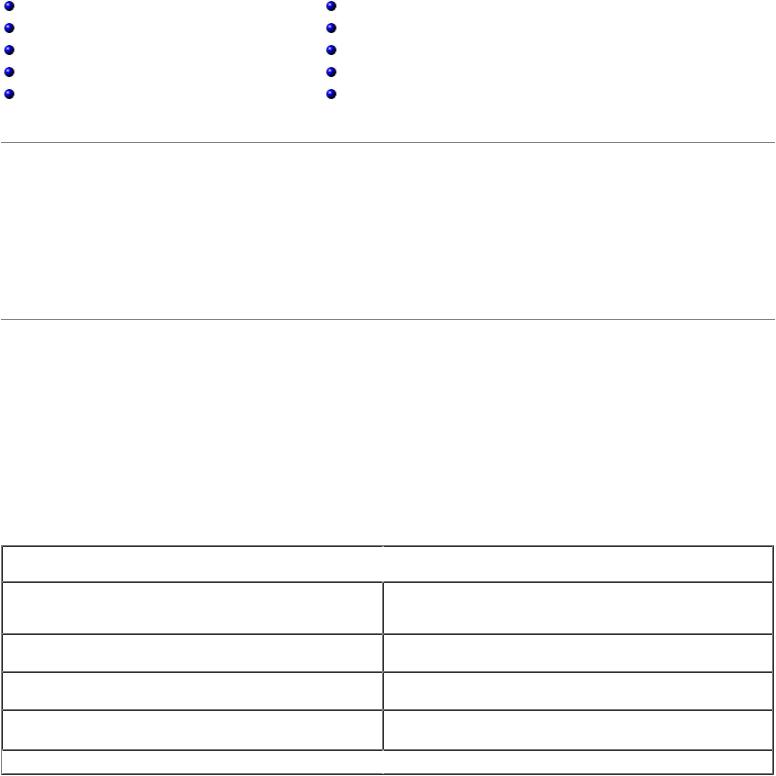
Back to Contents Page
Advanced Features
Dell™ OptiPlex™ GX280 Systems User's Guide
LegacySelect Technology Control |
Booting to a USB Device |
Manageability |
Clearing Forgotten Passwords |
Security |
Clearing CMOS Settings |
Password Protection |
Hyper-Threading |
System Setup |
Power Management |
LegacySelect Technology Control
LegacySelect technology control offers legacy-full, legacy-reduced, or legacy-free solutions based on common platforms, hard-drive images, and help desk procedures. Control is provided to the administrator through system setup, Dell OpenManage™ IT Assistant, or Dell™ custom factory integration.
LegacySelect allows administrators to electronically activate or deactivate connectors and media devices that include serial and USB connectors, a parallel connector, a floppy drive, PCI slots, and a PS/2 mouse. Connectors and media devices that are deactivated make resources available. You must restart the computer to effect the changes.
Manageability
Alert Standard Format
ASF is a DMTF management standard that specifies "pre-operating system" or "operating system-absent" alerting techniques. The standard is designed to generate an alert on potential security and fault conditions when the operating system is in a sleep state or the system is powered down. ASF is designed to supersede previous operating system-absent alerting technologies.
Your computer supports the following ASF version 1.03 alerts and remote capabilities:
Alert
Chassis: Chassis Intrusion – Physical Security
Violation/Chassis Intrusion – Physical Security
Violation Event Cleared
CPU: Emergency Shutdown Event
Cooling Device: Generic Critical Fan
Failure/Generic Critical Fan Failure Cleared
Temperature: Generic Critical Temperature
Problem/Generic Critical Temperature Problem
Cleared
 Battery Low
Battery Low
 Description
Description
The computer chassis with the chassis intrusion feature installed and enabled has been opened or the chassis intrusion alert has been cleared.
The processor temperature is too hot and the power supply has shut down.
The fan speed (rpm) is out of limits or the fan speed (rpm) problem has been resolved.
The computer temperature is out of limits or the computer temperature problem has been resolved.
 The system battery has reached a voltage of 2.2V or lower.
The system battery has reached a voltage of 2.2V or lower.
For more information about Dell's ASF implementation, see the ASF User's Guide and the ASF Administrator's Guide, which are available on the Dell Support website at support.dell.com.
Dell OpenManage IT Assistant

IT Assistant configures, manages, and monitors computers and other devices on a corporate network. IT Assistant manages assets, configurations, events (alerts), and security for computers equipped with industry-standard management software. It supports instrumentation that conforms to SNMP, DMI, and CIM industry standards.
Dell OpenManage Client instrumentation, which is based on DMI and CIM, is available for your computer. For information on IT Assistant, see the Dell OpenManage IT Assistant User's Guide available on the Dell Support website at support.dell.com.
Dell OpenManage Client Instrumentation
Dell OpenManage Client Instrumentation is software that enables remote management programs such as IT Assistant to do the following:
Access information about your computer, such as how many processors it has and what operating system it is running
Monitor the status of your computer, such as listening for thermal alerts from temperature probes or hard-drive failure alerts from storage devices
Change the state of your computer, such as updating its BIOS or shutting it down remotely
A managed system is one that has Dell OpenManage Client Instrumentation set up on a network that uses IT Assistant. For information about Dell OpenManage Client Instrumentation, see the Dell OpenManage Client Instrumentation User's Guide available on the Dell Support website at support.dell.com.
Security
Chassis Intrusion Detection
NOTE: When the admin password is enabled, you must know the admin password before you can reset the Chassis Intrusion setting.
This feature, if installed and enabled, detects that the chassis was opened and alerts the user. To change the Chassis Intrusion setting:
1.Enter system setup.
2.Press the down-arrow keys to move to the System Security option.
3.Press <Enter> to access the System Security option's pop-up menu.
4.Press the down-arrow key to move to the Chassis Intrusion setting.
5.Press <Enter> to select an option setting.
6.Press <Enter> again after you update the option setting.
7.Exit and save system setup.
Option Settings
 On — If the computer cover is opened, the setting changes to Detected, and the following alert message displays during the boot routine at the next computer start-up:
On — If the computer cover is opened, the setting changes to Detected, and the following alert message displays during the boot routine at the next computer start-up:
Alert! Cover was previously removed.
To reset the Detected setting, enter system setup. In the Chassis Intrusion option, press the leftor right-arrow key to select Reset, and then choose On, On-Silent, or Off.

On-Silent (default) — If the computer cover is opened, the setting changes to Detected. No alert message appears during the boot sequence at the next computer start-up.
Off — No intrusion monitoring occurs and no messages appear.
Padlock Ring and Security Cable Slot
Use one of the following methods to secure your computer:
Use a padlock alone or a padlock and looped security cable with the padlock ring.
A padlock alone prevents the computer from being opened.
A security cable looped around a stationary object is used in conjunction with a padlock to prevent unauthorized movement of the computer.
Attach a commercially available antitheft device to the security cable slot on the back of the computer.
NOTE: Before you purchase an antitheft device, make sure that it works with the security cable slot on your computer.
Antitheft devices usually include a segment of metal-stranded cable with an attached locking device and key. The documentation that comes with the device contains instructions for installing it.
Password Protection
NOTICE: Although passwords provide security for the data on your computer, they are not foolproof. If your data requires more security, it is your responsibility to obtain and use additional forms of protection, such as data encryption programs.
System Password
NOTICE: If you leave your computer running and unattended without having a system password assigned, or if you leave your computer unlocked so that someone can disable the password by changing a jumper setting, anyone can access the data stored on your hard drive.
Option Settings
You cannot change or enter a new system password if either of the following two options is displayed:
Set — A system password is assigned.
Disabled — The system password is disabled by a jumper setting on the system board.
You can only assign a system password when the following option is displayed:
Not Set — No system password is assigned and the password jumper on the system board is in the enabled position (the default).
Assigning a System Password
To escape from the field without assigning a system password, press <Tab> or the <Shift><Tab> key combination to move

to another field, or press <Esc> at any time before you complete step 5.
1.Enter system setup and verify that Password Status is set to Unlocked.
2.Highlight System Password, and then press the leftor right-arrow key.
The option heading changes to Enter Password, followed by an empty 32-character field in square brackets.
3. Type your new system password.
You can use up to 32 characters. To erase a character when entering your password, press <Backspace> or the leftarrow key. The password is not case sensitive.
Certain key combinations are not valid. If you enter one of these combinations, the speaker emits a beep.
As you press each character key (or the spacebar for a blank space), a placeholder appears in the field.
4. Press <Enter>.
If the new system password is less than 32 characters, the whole field fills with placeholders. Then the option heading changes to Verify Password, followed by another empty 32-character field in square brackets.
5. To confirm your password, type it a second time and press <Enter>.
The password setting changes to Set.
6. Exit system setup.
Password protection takes effect when you restart the computer.
Typing Your System Password
When you start or restart your computer, one of the following prompts appears on the screen.
If Password Status is set to Unlocked:
Type in the password and
- press <ENTER> to leave password security enabled. - press <CTRL><ENTER> to disable password security. Enter password:
If Password Status is set to Locked:
Type the password and press <Enter>.
If you have assigned an admin password, the computer accepts your admin password as an alternate system password.
If you type a wrong or incomplete system password, the following message appears on the screen:
** Incorrect password. **
If you again type an incorrect or incomplete system password, the same message appears on the screen. The third and subsequent times you type an incorrect or incomplete system password, the computer displays the following message:
** Incorrect password. **
Number of unsuccessful password attempts: 3 System halted! Must power down.
Even after your computer is turned off and on, the previous message is displayed each time you type an incorrect or incomplete system password.
NOTE: You can use Password Status in conjunction with System Password and Admin Password to further protect your computer from unauthorized changes.
Deleting or Changing an Existing System Password

1.Enter system setup and verify that Password Status is set to Unlocked.
2.Restart your computer.
3.When prompted, type the system password.
4.Press <Ctrl><Enter> to disable the existing system password.
5.Confirm that Not Set is displayed for the System Password option.
If Not Set is displayed, the system password is deleted. If Not Set is not displayed, press <Alt><b> to restart the computer, and then repeat step 3 through step 5.
To assign a new password, follow the procedure in "Assigning a System Password." 6. Exit system setup.
Admin Password
Option Settings
You cannot change or enter a new admin password if either of the following two options is displayed:
 Set — An admin password is assigned.
Set — An admin password is assigned.
 Disabled — The admin password is disabled by a jumper setting on the system board.
Disabled — The admin password is disabled by a jumper setting on the system board.
You can only assign an admin password when the following option is displayed:
 Not Set — No admin password is assigned and the password jumper on the system board is in the enabled position (the default).
Not Set — No admin password is assigned and the password jumper on the system board is in the enabled position (the default).
Assigning an Admin Password
The admin password can be the same as the system password.
NOTE: If the two passwords are different, the admin password can be used as an alternate system password. However, the system password cannot be used in place of the admin password.
1.Enter system setup and verify that Admin Password is set to Not Set.
2.Highlight Admin Password and press the leftor right-arrow key.
The computer prompts you to type and verify the password. If a character is not permitted, the computer emits a beep.
3. Type and then verify the password.
After you verify the password, the Admin Password setting changes to Set. The next time you enter system setup, the computer prompts you for the admin password.
4. Exit system setup.
A change to Admin Password becomes effective immediately (no need to restart the computer).

Operating Your Computer With an Admin Password Enabled
When you enter system setup, the Admin Password option is highlighted, prompting you to type the password. If you do not type the correct password, the computer lets you view, but not modify, system setup options.
NOTE: You can use Password Status in conjunction with Admin Password to protect the system password from unauthorized changes.
Deleting or Changing an Existing Admin Password
To change an existing admin password, you must know the admin password.
1.Enter system setup.
2.Type the admin password at the prompt.
3.Highlight Admin Password and press the leftor right-arrow key to delete the existing admin password.
The setting changes to Not Set.
To assign a new admin password, perform the steps in "Assigning an Admin Password."
4. Exit system setup.
Disabling a Forgotten Password and Setting a New Password
To reset system and/or admin passwords, see "Clearing Forgotten Passwords."
System Setup
Overview
Use system setup as follows:
 To change the system configuration information after you add, change, or remove any hardware in your computer
To change the system configuration information after you add, change, or remove any hardware in your computer
 To set or change a user-selectable option such as the user password
To set or change a user-selectable option such as the user password
 To read the current amount of memory or set the type of hard drive installed
To read the current amount of memory or set the type of hard drive installed
Before you use system setup, it is recommended that you write down the system setup screen information for future reference.
Entering System Setup
1.Turn on (or restart) your computer.
2.When the blue DELL™ logo appears, press <F2> immediately.
If you wait too long and the operating system logo appears, continue to wait until you see the Microsoft® Windows® desktop. Then shut down your computer and try again.

System Setup Screens
The system setup screen displays current or changeable configuration information for your computer. Information on the screen is divided into three areas: the options list, active options field, and key functions.
Options List — |
Option |
|
This field appears |
Field — |
|
on the left side of |
This field |
|
the system setup |
contains |
|
window. The field |
information |
|
is a scrollable list |
about each |
|
containing |
option. In |
|
features that |
this field |
|
define the |
you can |
|
configuration of |
view your |
|
your computer, |
current |
|
including |
settings |
|
installed |
and make |
|
hardware, power |
changes to |
|
conservation, |
your |
|
and security |
settings. |
|
features. |
Use the |
|
Scroll up and |
||
right and |
||
down the list by |
left arrow |
|
using the up and |
keys to |
|
down arrow keys. |
highlight |
|
As an option is |
an option. |
|
highlighted, the |
Press |
|
Option Field |
<Enter> to |
|
displays more |
make that |
|
information |
selection |
|
about that option |
active. |
|
and the option's |
|
|
current and |
|
|
available |
|
|
settings. |
|
Key Functions
— This field appears below the Option Field and lists keys and their functions within the active system setup field.
